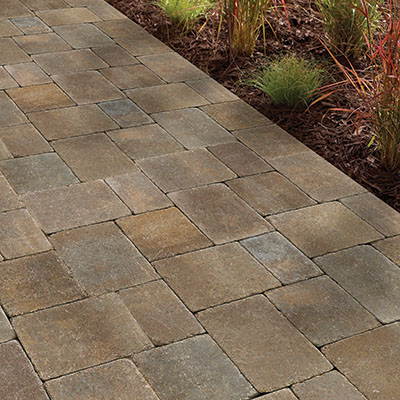The 1st segmental roadways were built from the Minoans about 5,000 years back. The Romans built the very first segmental interstate system, that has been over the current U.S. interstate highway system. Most would agree that paving stones produce an “Old World” beauty and charm, however the strength and longevity of interlocking pavers is frequently overlooked in America. This information will explain basic principles of interlocking pavers, and this will address common misconceptions about pavers.
It is important to recognize that a paving stone installation is definitely an engineered system; pavers are simply a part of this method. The constituents of your paving stone installation, in the bottom up, are: compacted sub-grade (or soil layer), Geotextile fabric, compacted aggregate base, bedding sand, edge restraint, pavers, and joint sand. Unlike cast in position concrete, interlocking pavers really are a flexible pavement. This is the flexibility which allows point load from the truck or car tire to become transferred and distributed through the base layer for the sub-grade. When the load has reached the sub-grade, the load has been spread more than a large area, along with the sub-grade won’t deform.
Concrete, alternatively, is often a rigid pavement. Its function is just to bridge soft spots inside the soil. Poured concrete will crack and break due to loads, shrinkage, soil expansion, and frost heaving of the sub-grade. Concrete is probably the most vital materials in construction, but poured set up concrete is really a poor paving surface. The reason is , its relative wherewithal to flex as well as low tensile strength. Fiber reinforcement and rebar can boost the tensile strength of concrete, but cracking and breaking are inevitable.

Modular paving stones are normally created from hardened precast concrete or kiln-fired clay. Properly installed pavers are interlocked, so lots on one paver is spread among several pavers and finally transferred through the lower layer. Factors that affect interlock are paver thickness, paver shape, paver size, joint widths, laying pattern, and edge restraint. Most paver manufacturers offer a lifetime warranty when their products are installed by a professional. Piece of rock like Flagstone and Bluestone isn’t ideal for flexible paving, and they’re typically mortar-set with a concrete slab. Because interlocking pavers are merged with sand (as opposed to mortar), they are often uplifted and replaced inexpensively. As an example pavers can be uplifted gain access to underground utilities and reinstated when work is complete.
Paving system designs depend on variables which include soil make-up, anticipated load stress, climate, water table, and rainfall. The types of materials used for aggregate base and bedding sand vary geographically. Soils which can be high in clay and loam are unsuitable for compaction and will not be used as base material; in these instances a graded crushed stone is substituted. Proper compaction from the sub-grade and base material is essential to the long-term performance of an paving system, along with vehicular applications the compacted base depth may be over One foot. The edges of a paver installation have to be restrained to make certain interlock preventing lateral creep. The most typical varieties of edge restraint are staked-in plastic edge restraint, precast concrete curb, and cast-in-place concrete. Bedding sand materials include angular sand, manufactured sand, and polymeric sand.
To get more information about Interlocking stone please visit net page: here.
